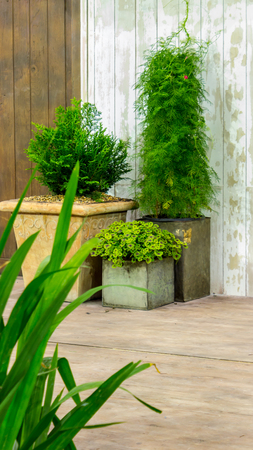Introduction to Eco-Friendly Decking
Creating an outdoor space that is both beautiful and environmentally responsible starts with choosing the right decking materials. Traditional decking materials, such as pressure-treated wood or non-recyclable composites, can have a significant impact on the environment due to deforestation, chemical treatments, and landfill waste. Thankfully, there are many eco-friendly alternatives that provide durability, aesthetic appeal, and sustainability.
Why Choose Sustainable Decking?
Eco-friendly decking materials help reduce environmental impact by using recycled content, responsibly sourced wood, or innovative materials designed to last longer with minimal maintenance. Choosing sustainable options means you can enjoy your deck for years while knowing that you’re making a positive contribution to the planet.
Key Benefits of Eco-Friendly Decking
- Reduced Environmental Impact: Many sustainable decking options use recycled or renewable materials, reducing waste and deforestation.
- Durability: High-quality eco-friendly decking materials often last longer than traditional wood, meaning fewer replacements and less resource consumption.
- Low Maintenance: Many sustainable options require less staining, sealing, and upkeep compared to traditional wood decks.
- Aesthetic Appeal: Modern eco-friendly decking materials come in a variety of styles and colors, allowing you to create a stunning outdoor space without compromising on sustainability.
Comparison of Traditional vs. Eco-Friendly Decking Materials
| Material Type | Sustainability | Lifespan | Maintenance |
|---|---|---|---|
| Pressure-Treated Wood | Not sustainable (chemically treated) | 10-15 years | High (regular sealing/staining required) |
| Cedar/Redwood | Semi-sustainable (if sourced responsibly) | 15-20 years | Moderate (requires sealing/staining) |
| Bamboo Decking | Sustainable (rapidly renewable) | 20+ years | Low to moderate (depends on treatment) |
| Composite Decking (Recycled Plastic & Wood Fibers) | Sustainable (uses recycled materials) | 25-30 years | Low (no staining/sealing needed) |
| PVC Decking (Recycled Plastic) | Sustainable (100% recyclable) | 30+ years | Very low (resistant to moisture & pests) |
The shift toward eco-friendly decking is not just a trend—it’s a necessary step toward building more sustainable homes and outdoor spaces. By understanding the benefits and exploring different material options, you can create a deck that enhances your outdoor living area while protecting the environment.
2. Types of Sustainable Decking Materials
When choosing eco-friendly decking materials, there are several sustainable options to consider. Each type offers unique benefits in terms of durability, aesthetics, and environmental impact. Below is a breakdown of some of the best choices for a sustainable outdoor space.
Reclaimed Wood
Reclaimed wood is sourced from old buildings, barns, and other structures, giving it a second life instead of ending up in landfills. This option not only reduces deforestation but also provides a rustic and unique appearance. However, it may require more maintenance than other materials to prevent rot and insect damage.
Composite Decking
Composite decking is made from a mix of recycled wood fibers and plastic, creating a durable and low-maintenance alternative to traditional wood decking. It resists moisture, insects, and fading while reducing the need for new lumber. Many brands offer composite decking with various colors and textures that mimic natural wood.
Bamboo
Bamboo is a rapidly renewable resource that grows much faster than traditional hardwood trees. As a decking material, it is strong, lightweight, and naturally resistant to pests and moisture. However, it’s essential to choose bamboo decking that has been sustainably harvested and treated to withstand outdoor conditions.
Recycled Plastic Decking
This type of decking is made entirely from recycled plastics, such as milk jugs and plastic bags. It offers excellent durability, requires minimal maintenance, and does not splinter or warp like wood. Additionally, it helps keep plastic waste out of landfills and oceans.
Comparison of Sustainable Decking Options
| Material | Main Benefits | Potential Drawbacks |
|---|---|---|
| Reclaimed Wood | Reduces deforestation, unique aesthetic | Higher maintenance, potential for pests |
| Composite Decking | Durable, low-maintenance, resists moisture | Synthetic appearance in some cases |
| Bamboo | Sustainable, strong, pest-resistant | Might require treatment for weather resistance |
| Recycled Plastic Decking | No splinters or warping, highly durable | Lacks natural wood texture |
Selecting the right decking material depends on your priorities—whether you value aesthetics, durability, or environmental impact the most. Each of these options contributes to a more sustainable outdoor space while providing lasting enjoyment.

3. Pros and Cons of Each Material
Choosing the right eco-friendly decking material involves considering several factors, including durability, maintenance, cost, and environmental impact. Below is a breakdown of the most common sustainable decking options.
Composite Decking
Pros
- Made from recycled wood fibers and plastic, reducing waste.
- Highly durable and resistant to rot, mold, and insects.
- Low maintenance—no need for staining or sealing.
- Available in a variety of colors and textures.
Cons
- Can be more expensive upfront than traditional wood.
- Not biodegradable at the end of its lifespan.
- Tends to retain heat, making it hot underfoot in summer.
Bamboo Decking
Pros
- A rapidly renewable resource with a lower environmental footprint.
- Naturally resistant to pests and moisture.
- Aesthetic appeal similar to hardwood.
- Slightly less expensive than hardwood alternatives.
Cons
- Sensitive to extreme weather conditions if not properly treated.
- Might require regular sealing for longevity.
- Lifespan may be shorter compared to composite or hardwood materials.
Reclaimed Wood Decking
Pros
- A truly sustainable option that repurposes old wood.
- Adds unique character with natural aging and patina.
- No new trees are cut down for production.
- If properly maintained, can last for decades.
Cons
- Might require refinishing or sealing regularly.
- Potential for hidden defects such as cracks or insect damage.
- Sourcing high-quality reclaimed wood can be challenging.
PVC-Free Recycled Plastic Decking
Pros
- Makes use of 100% recycled plastics, keeping waste out of landfills.
- No risk of splinters, making it barefoot-friendly.
- No need for staining or sealing—extremely low maintenance.
- Mold and insect resistant.
Cons
- Lacks the natural appearance of real wood.
- The surface may become slippery when wet.
- Certain brands may still have environmental concerns related to plastic processing.
Cork Decking
Pros
- A renewable material harvested without harming trees.
- Naturally water-resistant and slip-resistant.
- Softer underfoot compared to other decking materials.
- An excellent insulator that stays cool in summer.
Cons
- Softer surface may be prone to dents and scratches over time.
- Lifespan can be shorter than harder materials like composite or hardwoods.
- Might require regular resealing for outdoor durability.
Comparison Table: Eco-Friendly Decking Materials
| Material | Sustainability | Lifespan | Main Maintenance Needs | Aesthetic Appeal | Main Drawback |
|---|---|---|---|---|---|
| Composite Decking | Sustainable (uses recycled materials) | 25+ years | Minimal—just cleaning required | Mimics wood but slightly artificial look | Retains heat; not biodegradable after use |
| Bamboo Decking | Sustainable (fast-growing resource) | 15-20 years | Requires sealing periodically | Natural wood-like appearance | Can deteriorate faster in harsh climates |
| Reclaimed Wood Decking | Sustainable (repurposed material) | Varies (depends on type & condition) | Frequent refinishing/sealing needed | Rustic and unique aged look | May contain imperfections; sourcing challenges |
| PVC-Free Recycled Plastic Decking | Sustainable (made from recycled plastics) | 20+ years | Almost no maintenance needed | Modern but lacks natural wood grain look | Surface may become slippery when wet |
| Cork Decking | Sustainable (harvested without tree damage) | 10-15 years | May need resealing occasionally | Soft, warm texture with a natural feel | Prone to dents & scratches over time |
Selecting the best eco-friendly decking material depends on your budget, climate, and how much maintenance youre willing to do. Whether you prioritize durability, sustainability, or aesthetics, each option has unique benefits that cater to different outdoor spaces. Understanding these pros and cons will help you make an informed decision for a long-lasting and environmentally responsible deck.
4. How to Choose the Right Material for Your Space
Selecting the best eco-friendly decking material for your outdoor space involves considering several factors. Each choice has its benefits and drawbacks, so its important to evaluate your specific needs before making a decision.
Key Factors to Consider
Climate
The local climate plays a significant role in determining the right decking material. Some materials perform better in humid environments, while others are more resistant to extreme temperature changes.
| Climate Type | Recommended Materials | Why? |
|---|---|---|
| Hot and Dry | Bamboo, Composite | Resists cracking and fading under strong sun |
| Humid and Rainy | Recycled Plastic, Composite | Mold-resistant and water-resistant |
| Cold and Snowy | Composite, Reclaimed Wood | Less prone to warping or cracking from freezing temperatures |
Usage
Think about how you plan to use your deck. If it will see heavy foot traffic or frequent gatherings, durability should be a top priority.
- High-Traffic Areas: Opt for composite or recycled plastic decking, as they are highly durable.
- Light Use: Bamboo or reclaimed wood can be good choices for spaces with minimal wear and tear.
- Pools and Wet Areas: Choose moisture-resistant materials like composite or recycled plastic.
Budget
Your budget will also influence your decision. Some materials have higher upfront costs but require less maintenance over time, saving money in the long run.
| Material Type | Initial Cost | Maintenance Cost |
|---|---|---|
| Bamboo | $ – Affordable | $ – Low Maintenance |
| Composite | $$ – Moderate | $ – Low Maintenance |
| Reclaimed Wood | $ – Affordable | $$ – Requires Treatment & Sealing |
| Recycled Plastic | $$$ – Higher Cost | $ – Minimal Maintenance |
Aesthetic Preferences
Your deck should complement the style of your home and outdoor space. Each material offers unique textures and colors that can enhance your design.
- Bamboo: Warm, natural look with a smooth finish.
- Composite: Available in various colors and textures that mimic real wood.
- Reclaimed Wood: Rustic charm with character-rich grains and knots.
- Recycled Plastic: Modern appearance with bold color options.
The right decking material depends on your climate, usage needs, budget, and personal style. By carefully considering these factors, you can choose a sustainable option that enhances your outdoor space while minimizing environmental impact.
5. Additional Eco-Friendly Decking Tips
Building a sustainable outdoor space goes beyond just selecting the right materials. Proper installation, maintenance, and disposal practices can further reduce your decks environmental impact. Here are some best practices to ensure your decking remains eco-friendly throughout its lifespan.
Sustainable Finishes and Sealants
Choosing environmentally friendly finishes and sealants helps protect both your deck and the surrounding environment. Look for products with low or no volatile organic compounds (VOCs), which reduce air pollution and improve indoor and outdoor air quality.
| Eco-Friendly Finish Type | Benefits |
|---|---|
| Water-Based Sealants | Low VOCs, less toxic, easy cleanup |
| Naturally Derived Oils (e.g., Linseed, Tung Oil) | Biodegradable, non-toxic, enhances wood durability |
| Recycled Content Stains | Made from sustainable ingredients, reduces waste |
Responsible Sourcing of Materials
If youre purchasing new decking materials or replacing old ones, prioritize responsibly sourced options. Look for certifications such as:
- FSC (Forest Stewardship Council): Ensures wood comes from sustainably managed forests.
- PEFC (Programme for the Endorsement of Forest Certification): Promotes responsible forest management worldwide.
- Cradle to Cradle Certified™: Evaluates materials based on environmental impact and recyclability.
Proper Disposal and Recycling of Old Materials
If youre removing an old deck, consider eco-friendly disposal methods instead of sending everything to a landfill. Here’s how you can manage different materials:
| Material Type | Sustainable Disposal Options |
|---|---|
| Naturally Treated Wood | Repurpose for landscaping projects, donate to reuse centers |
| PVC or Composite Decking | Check with manufacturers for recycling programs |
| Nails and Metal Fasteners | Recycle at local scrap metal facilities |
Sustainable Maintenance Practices
A well-maintained deck lasts longer, reducing the need for premature replacements and excess material consumption. Follow these eco-conscious maintenance tips:
- Sweep Regularly: Prevents debris buildup that can cause decay or mold.
- Avoid Harsh Chemicals: Use biodegradable cleaners instead of bleach or synthetic detergents.
- Select Energy-Efficient Lighting: Opt for solar-powered deck lights to minimize electricity use.
- Catching Water Runoff: Install rainwater collection systems near your deck to water nearby plants efficiently.
By combining sustainable materials with responsible installation, maintenance, and disposal practices, you can enjoy a beautiful outdoor space while minimizing environmental impact.


